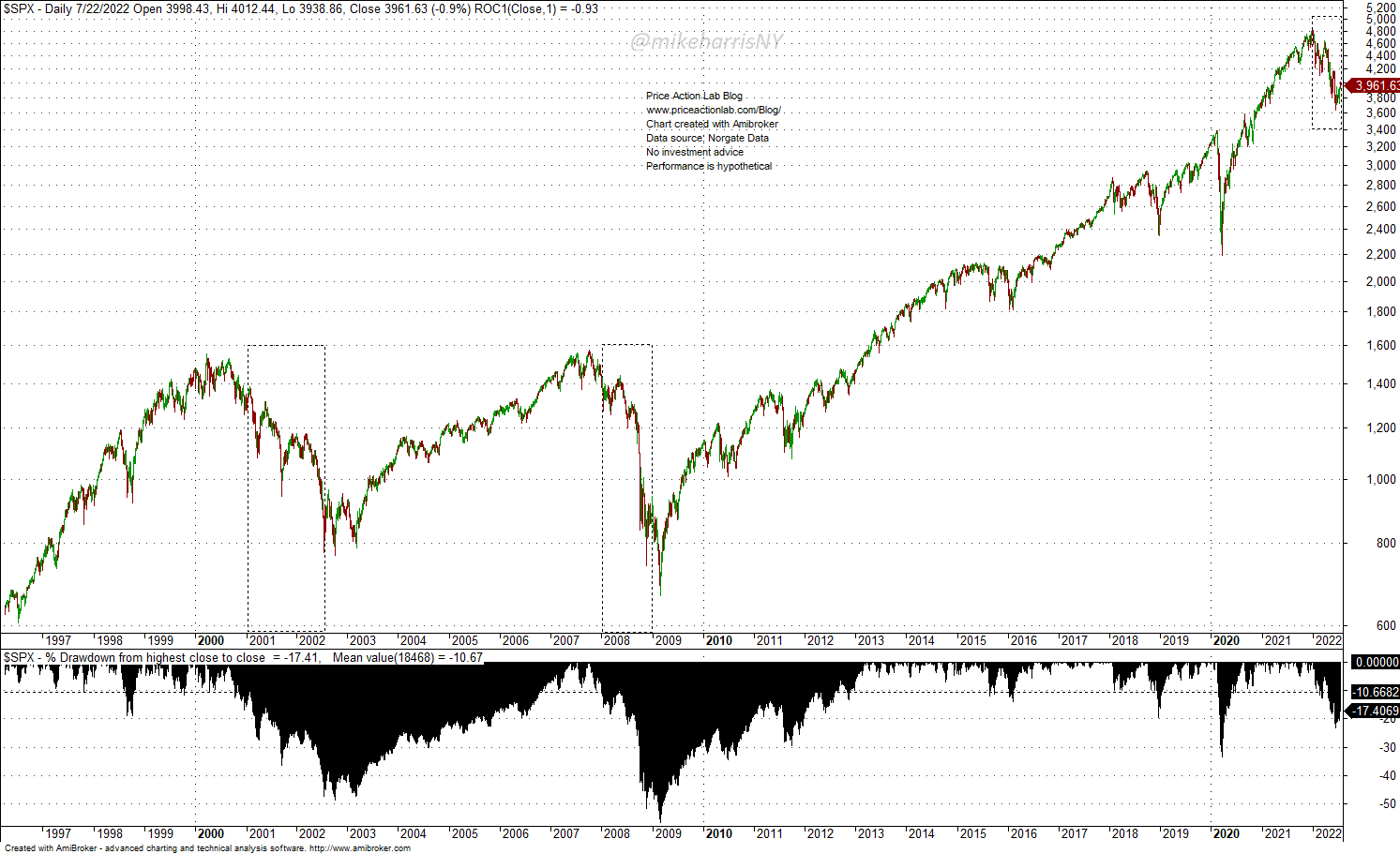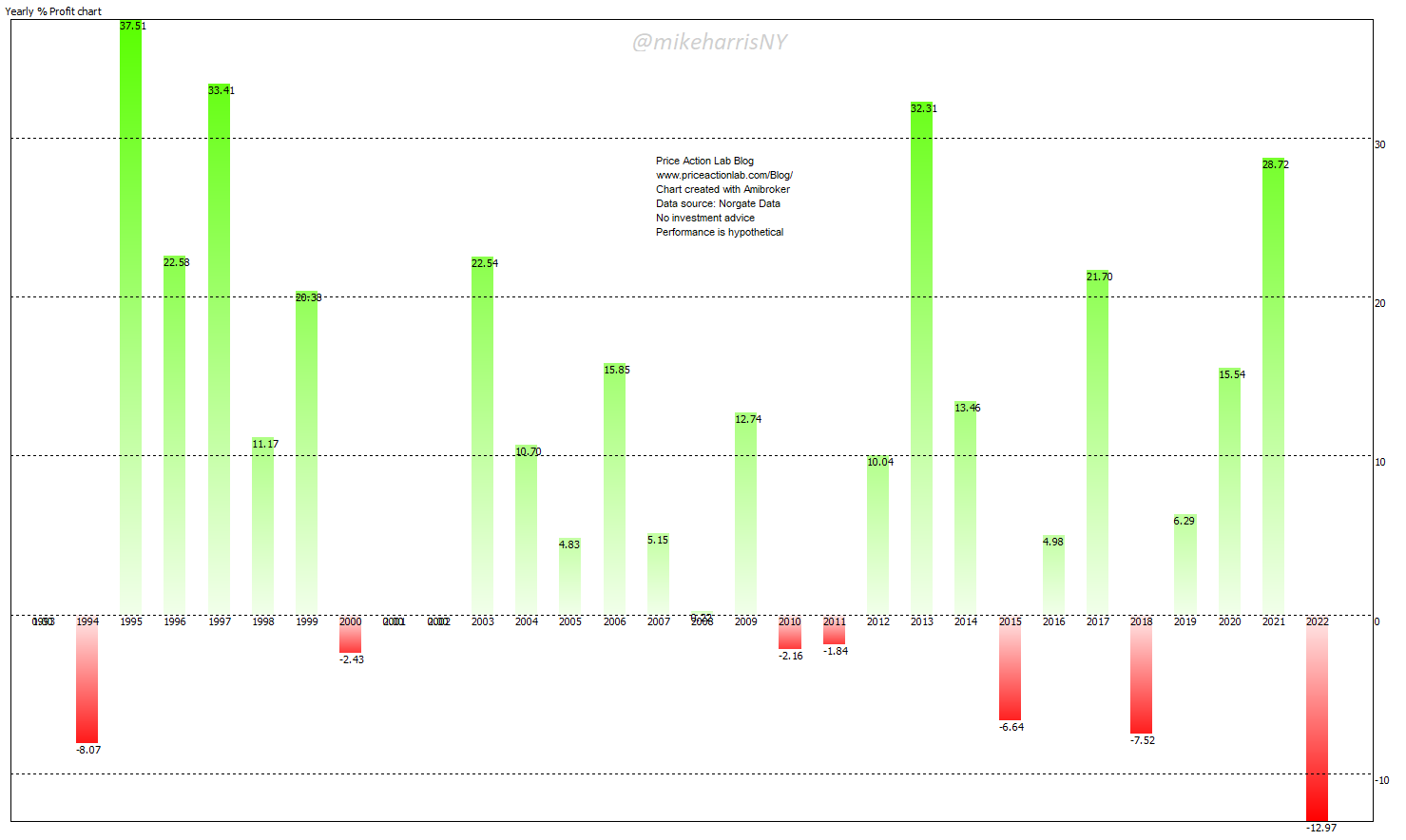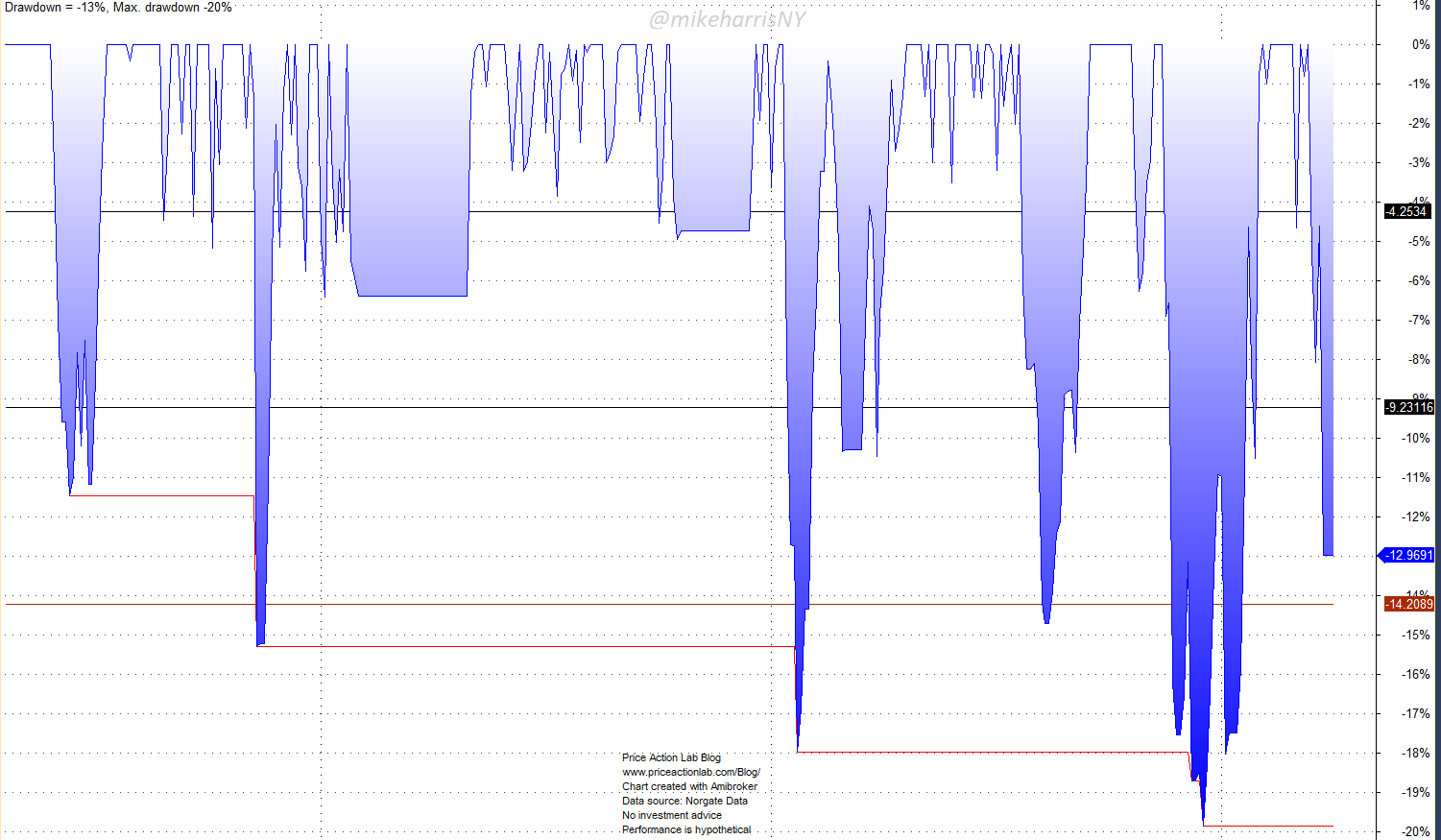Losing discipline and not following basic rules is more prevalent during a bear market and a slow “pain trade”.
Using strategies to enforce discipline is not sufficient to escape the adverse effects of a slow “pain trade” and high volatility mixed with occasional relief rallies.
Both traders and investors tend to lose the discipline required for timing and risk management, especially during bear markets.
There are two components to successful trading and investing:
- Market timing.
- Risk management.
Market timing requires a model and although it is already hard enough to discover one that is robust over time, it is far from a sufficient condition for profitability. Profitability also requires adhering to strict risk management rules.
This year has not been much different than 2008, 2001, or 2002, as far as the difficulty in maintaining discipline and timing the markets.
A slow down drift, also known as “pain trade”, that inflicts maximum damage to most market participants, has been interrupted by occasional relief rallies in all cases marked in the above chart.
During the dot com bear market period, I experienced a loss of discipline due to the lack of a method for risk management. I spent a few years working on that and as a hedge fund equity and ETF trader during the 2008 bear market, I was able to maintain a strict risk profile while aiming at high probability setups, long or short.
Although there are sophisticated risk management methods, mine during 2008 was simple: the total “portfolio heat”, or what was at risk at every instant, was not more than 2% to 3%. The task was reduced to sizing positions not to exceed these targets. Being a short-term trader was easier than in the case of trend-followers, for example, where positions may be held for an extended period and there must be scaling-in, or scaling out, to adjust the risk. But in 2008, I never lost this discipline for a moment and it paid off, not in the form of big gains, but in avoiding large losses.
This year I have noticed many traders I have known and followed are not disciplined. Some even think that trading options, or buying insurance in the form of a “tail hedge”, will reduce losses, or make profits. The slow “pain trade” in conjunction with the proliferation of derivatives, derivatives of derivatives, but also derivatives of derivatives of derivatives, has created a toxic environment for risk management and has caused loss of discipline in many cases. Some traders and investors are deep in the red because they think they can deal with the noise generated by the market process using first-order logic.
Risk management, but also timing, need not be complicated. They require focusing on the objectives and refraining from paying attention to noise generators, other market participants who talk about their books, or mainstream financial media. For a momentum trader in SPY ETF using the 12-month moving average long-only, is disappointing to have a 13% loss year-to-date.
Year-to-date the loss is larger than losses for previous years by far. However, the year is not over yet. Trying to make up for the loss by altering the system or doing discretionary trades equates to a loss of discipline. The drawdown this year has not been larger than historical levels.
Year-to-date the drawdown is about -13% versus -20% for maximum. There is a possibility the market will recover and the current loss will be reduced. Or, losses will mount and the drawdown will increase. No one knows but when following a strategy, more damage can be inflicted by losing discipline than by the strategy itself and this is what experience shows. The above was just an example.
The message from the brief note about a complex subject is that risk management and discipline are significant components of success in trading and investing. Changes can be made but they must fit in a proper framework that respects the process. Compulsive actions rarely lead to success.
Premium Content 10% off for blog readers and Twitter followers with coupon NOW10
Disclaimer: The premium articles are provided for informational purposes only and do not constitute investment advice or actionable content. We do not warrant the accuracy, completeness, fitness, or timeliness for any particular purposes of the premium articles. Under no circumstances should the premium articles be treated as financial advice. The author of this website is not a registered financial adviser. The past performance of any trading system or methodology is not necessarily indicative of future results. . Read the full disclaimer here.
Charting and backtesting program: Amibroker. Data provider: Norgate Data









